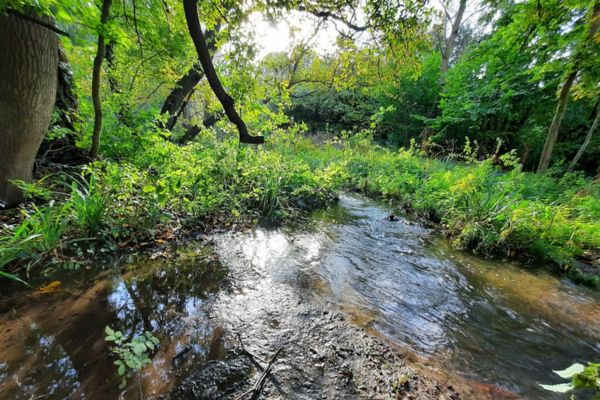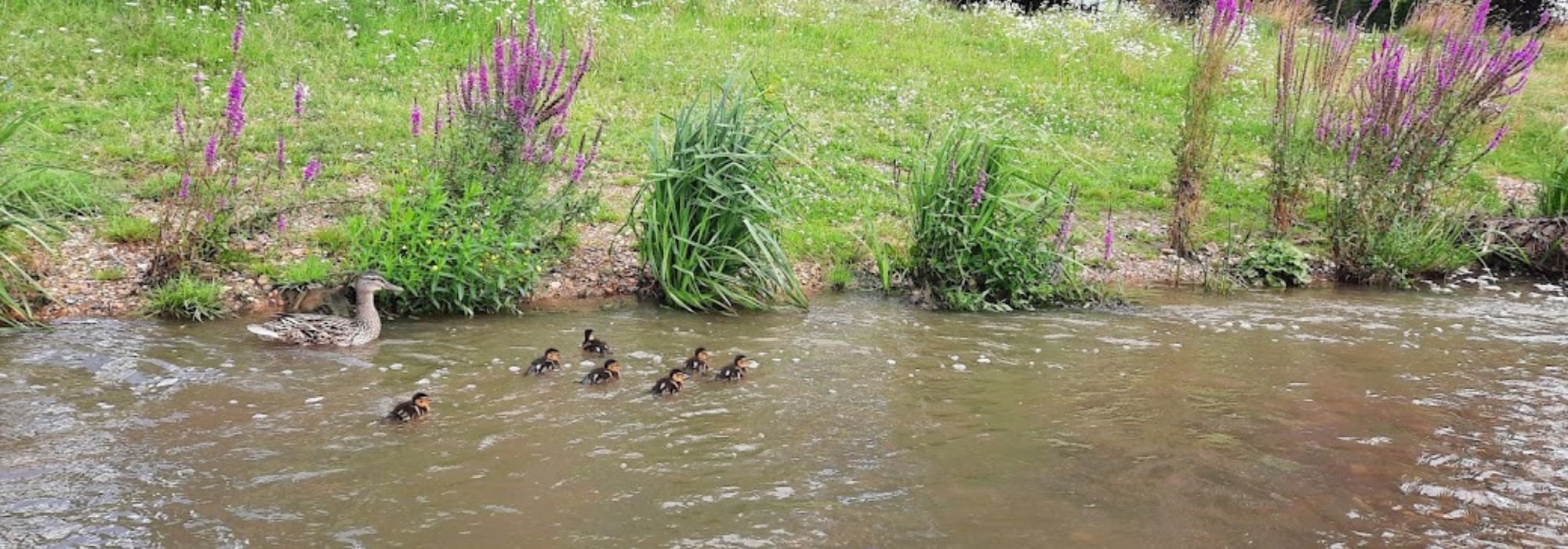River catchments, explained

If you’re a river enthusiast, you’ve probably heard the term ‘catchment’ before. However, we understand that as it’s a complex topic, it can be somehow confusing to understand what comprises a river catchment and the importance of seeing waterways as a whole as opposed to focusing exclusively on the local stretch of a river or a stream.
What’s a river catchment?
A river catchment is an area of land where water, be it from rainfall, snowmelt, or ice, collects from higher areas above it. It’s usually surrounded by hills or mountains, which allows water to flow over the landscape into streams and tributaries, and down into the soil, eventually finding its way to the local river, lake, or reservoir. The water absorbed underground slowly feeds the river in drought periods.
River catchments can vary in size, going from small urban areas to large estuaries. They are extremely complex and intertwined ecosystems that support a great range of biodiversity and enable human activity. Any changes carried out upstream will eventually be noticed downstream. This is the reason we should understand and care for our waterways throughout their total course.
The importance of having a ‘catchment-based approach’
River catchments are impacted by every activity that happens on land, as well as in the water environment. Agricultural pollution, sewage spills, road run-off, and water abstraction are some of the issues facing our rivers. A catchment-based approach allows those problems to be identified and addressed at the source, improving the entire ecosystem – from tributaries to the main waterway, for both people and wildlife.
More than that, catchment management involves multiple stakeholders coming together and doing their part. Water companies, businesses, local authorities and residents, everyone play a vital role in protecting and treasuring their catchment.
How we do it
At Thames21, we use a catchment-based approach in many of our projects to benefit local communities by increasing flood resilience and improving water quality.
We host or co-host nine out of 28 catchment partnerships covered by the Thames River Basin Management Plan. These partnerships aim to enhance the health and natural functioning of a wide variety of interconnected water environments and river systems, putting people and wildlife at their heart. They undertake integrated management of land and water, addressing a catchment as a whole and delivering practical interventions in the area. We work closely with water companies, local authorities, urban and rural communities, and individuals to establish projects incorporating sustainable solutions, such as natural flood management, road run-off pollution pathways, and others.
The Catchment to Coast project in partnership with Thurrock Borough Council, Southend-on-Sea Borough Council, and others, uses innovative nature-based solutions to address flooding and coastal erosion from source to sea, bringing together river stakeholders and local communities. Different strategies will be used in the upper, middle, and lower areas of the catchment, providing a tailored and effective approach.
A catchment-based approach is an effective way to deliver positive and sustained outcomes for water environments through collaboration and comprehensive restoration techniques in the entire ecosystem. When it comes to rivers, we should always look at the bigger picture to understand the local one.
